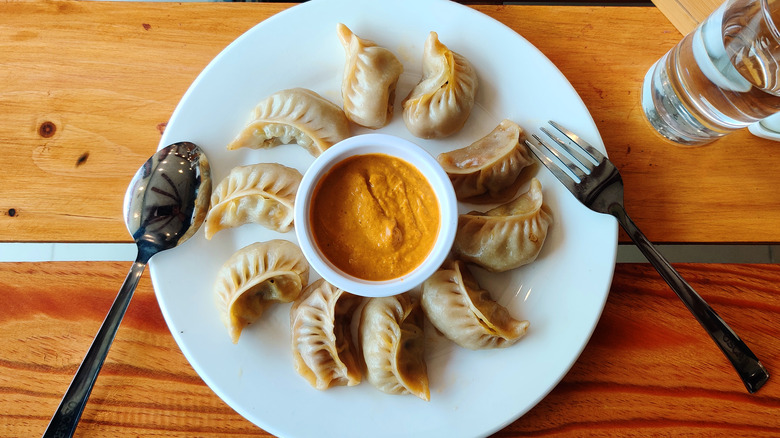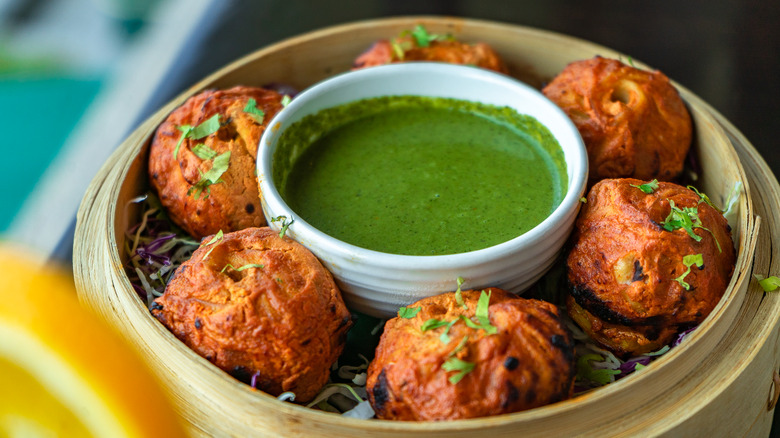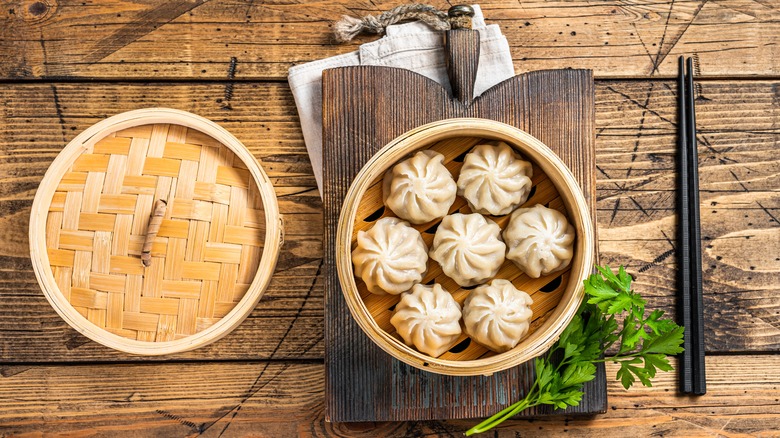What Makes Nepalese Momo Unique
One of the most common foods across the culinary globe is the dumpling. Italy has gnocchi and ravioli, Poland has pierogies, and Japan has gyoza, but one style of dumpling that isn't as well known is Nepali momo.
According to Slow Food, momo were first documented in the 14th century. The flavorful dumplings originated with Nepal's Newar community and soon spread to neighboring countries as well. Nepali Trends adds that momo have become an exceedingly common food in Nepal these days. Hotels, restaurants, and street carts will commonly sell different variations of momo.
Nepali immigrants have brought momo with them to the United States as well. Restaurants like Momo Ghar in Columbus' North Market, Momo Cha in Detroit, and Everest Momo Plus in Chantilly, Virginia have helped spread the delicious dumplings well outside of their Himalayan origins. Thrillist says momo are also common in areas where Nepali communities settled in clusters like Irving, Texas, and Jackson Heights in New York City, which celebrates an annual Momo Crawl.
World Travel Chef shares that momo are hard to pin down as they are served in a variety of different manners. They can be steamed or fried, folded into small rounds, or served as sharply pleated purses. Sometimes they contain meat, other times vegetables, and they're often coated with a number of different sauces as well. Momo have plenty of unique qualities though that help them stand out in a world of dumplings.
Momo fillings spice things up
Some dumplings, like the classic Chinese bao, are defined by their wrapper. Momo wrappings are important though nothing too special. Instead, it's their fillings that shine. Nepal Restaurant points out that momo wrappers are made from a simple mixture of flour and water, though Thrillist adds that in Nepal they typically use a whole wheat flour known as chapati. This means that, like any good dumpling, the wrappers are more or less a blank canvas for the delicious fillings.
One of the most common fillings used in Nepal is buffalo meat, or buff momo, per Nepal Restaurant. However, chicken, beef, and vegetables like pumpkin or spinach and cheese are just as common these days. Whatever meat or vegetable is used is also mixed in a variety of spices including cumin, ginger, garlic, chilies, and dried coriander seeds. This gives the filling a satisfying savory flavor, that's brightened by the addition of fresh cilantro leaves. World Travel Chef also points out that soy sauce and stock are also sometimes added so that the filling simmers in this liquid while it cooks.
Thrillist reports that there is a ton of variety between momo fillings, but most involve numerous spices, along with other South Asian staple ingredients. For example, the Washington Post notes that Everest Momo Plus includes hints of cloves and turmeric along with coriander, cumin, fresh ginger, and garlic.
One thing that definitely sets momo apart from other dumplings though is the flavorful accompanying sauces.
Momo sauces are even spicier
There might be plenty of flavors packed into momo fillings, but they're also served with a number of flavorful sauces as well. One might encounter momo with a small side of sauce or chutney, or find it swimming in a batch of soupy jhol like those found at Momo Ghar. Anup's Kitchen notes that this flavorful red broth is usually made from a mixture of tomatoes, sesame seeds, chilis, and other spices like cumin, cilantro, and fenugreek. World Travel Chef writes that other common momo sauces are hot chile dip and tomato achaar.
Thrillist notes that Nepali momo sauces are most often defined by their spicy kick — similar options served in India or other regions won't have the same kind of heat as those found in the landlocked country. For example, jhol includes multiple types of chiles along with Sichuan peppercorns, though there are many other elements present to balance out the flavor, per Anup's Kitchen.
Just like the fillings, momo sauces can also take many different forms, though they will typically still include many of the same savory spices. Detroit's Momo Cha, for example, serves a mint and cilantro sauce that may not have the same acidity as a tomato base, but still includes ginger, garlic, and a masala of other spices.


